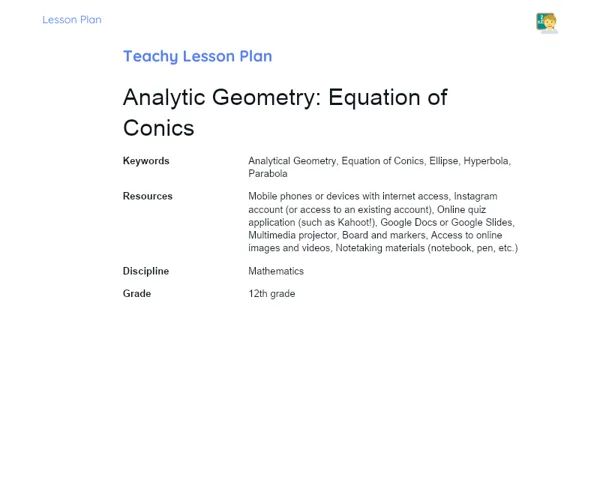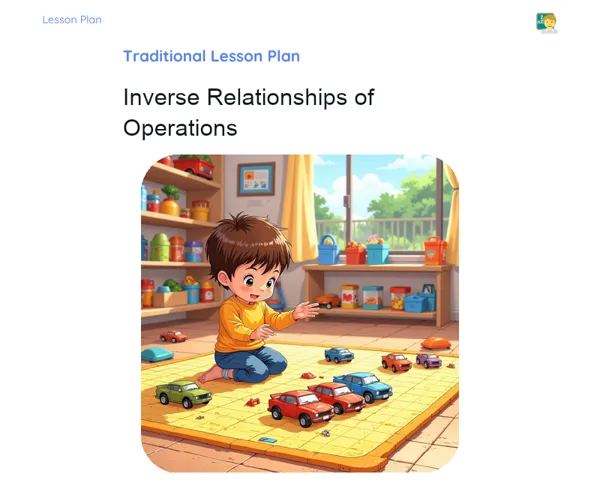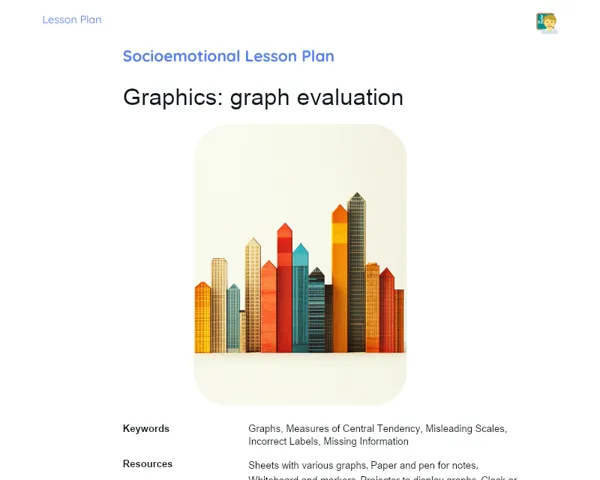Lesson Plan Teknis | Trapezoid Area
| Palavras Chave | Area of a Trapezoid, Formula, Practical Problems, Problem Solving, Trapezoidal Plot, Construction, Interior Design, Engineering, Architecture, Practical Skills, Group Collaboration, Measurement, Application of Mathematical Concepts |
| Materiais Necessários | Image of a trapezoidal plot of land, Short video about the application of the trapeoidal area calculation, Cardboard, Ruler, Scissors, Glue, Paper for recording measurements and calculations |
Objective
Duration: 15 - 20 minutes
The goal of this section is to introduce learners to the idea of the trapezoid's area, focusing on how this knowledge is applicable in real-life contexts. Developing these skills is vital for students to tackle mathematical problems confidently and appreciate the significance of math in the job market and their everyday lives.
Objective Utama:
1. Understand the formula for calculating the area of a trapezoid.
2. Apply the area calculation of a trapezoid to real-life situations, like land plots or irregularly shaped rooms.
Objective Sampingan:
- Enhance problem-solving abilities in mathematics.
- Appreciate the value of calculating the area of a trapezoid in everyday life and professional settings.
Introduction
Duration: (15 - 20 minutes)
This stage aims to familiarise students with the trapezoid’s area concept, spotlighting its practical applications in real life. Mastering these skills is essential for students to approach mathematical challenges with assurance and realise how important mathematics is in everyday and professional scenarios.
Curiosities and Market Connection
🤔 Fun Fact: Trapezoids are shapes you'll encounter often, both in daily life and in various jobs. For instance, in construction, land plots and lots often have quirky shapes that must be measured accurately for building purposes. Similarly, in interior design, you might find furniture and decorations that are trapezoidal to fit spaces better. 🏗️ Career Relevance: Professionals such as architects, engineers, and land surveyors use trapezoidal area calculations to design and assess plots and structures. Knowing how to do this correctly can be the difference between a successful project or a flop.
Contextualization
Picture yourself as an architect needing to find the area of a trapezoidal piece of land for a new building. Or consider a rugby field that isn't quite rectangular but rather trapezoidal. Grasping how to calculate the area of a trapezoid is crucial for addressing these practical issues, which frequently come up in fields like architecture, engineering, and design.
Initial Activity
📷 Initial Activity: Show the students a photo of a trapezoidal plot of land and ask: How would you find the area of this piece of land? Then, show a short video (3-5 minutes) depicting how trapezoidal area calculations are applied in construction.
Development
Duration: (35 - 40 minutes)
This section aims to reinforce students' grasp of trapezoidal area calculations through practical and collaborative exercises, promoting reflection on how this knowledge is applicable in real-life contexts and assessing their understanding through fixation exercises.
Topics
1. Definition and characteristics of trapezoids
2. Formula for calculating trapezoidal area
3. Real-life applications of trapezoidal area calculations
4. Problem-solving activities involving trapezoidal area
Thoughts on the Subject
Encourage students to think about how the formula for trapezoidal area could be used in various day-to-day situations and professions. Ask them how this knowledge can help in planning and executing genuine projects, like buildings, interior designs, or even assessing farmland.
Mini Challenge
Creating a Trapezoidal Plot
Students will form small groups and be given materials like cardboard, rulers, scissors, and glue. They’ll build a model of a trapezoidal plot, measure its sides, and figure out the area.
1. Split the class into groups of 4 to 5 students.
2. Hand out the materials: cardboard, rulers, scissors, and glue.
3. Instruct each group to sketch and cut a trapezoid from the cardboard, choosing their own dimensions.
4. Once the model is built, each group should measure the longer base (B), the shorter base (b), and the height (h) of their trapezoid.
5. Using the formula A = [(B + b) * h] / 2, they should calculate the area.
6. Have each group jot down their measurements and calculations.
7. Finally, each group presents their model and explains how they calculated the area.
Foster practical skills in measurement and the application of the trapezoidal area formula while encouraging teamwork and a hands-on approach to math.
**Duration: (30 - 35 minutes)
Evaluation Exercises
1. Find the area of a trapezoid with bases of 8 cm and 5 cm and a height of 6 cm.
2. A rugby field has trapezoidal bases measuring 100 m and 75 m with a height of 50 m. What is the area of the field?
3. A trapezoidal piece of land has these measurements: larger base = 20 m, smaller base = 15 m, and height = 10 m. Calculate the area.
4. Draw a trapezoid and swap it with a classmate. Measure their drawn trapeoid's dimensions and calculate its area.
Conclusion
Duration: (10 - 15 minutes)
The purpose of this conclusion is to cement students' learning, allowing them to reflect on their experiences and understand the real-life importance of what they've learnt. This wraps up the lesson by connecting theory to practice and reinforcing the application of mathematical concepts in real-world scenarios.
Discussion
🗣️ Discussion: Lead a conversation with students on how the lesson linked theory with practice regarding the trapezoidal area formula. Have them share their thoughts on the mini-challenge and what they learnt from the activity. Encourage discussion about any challenges they faced and how they worked through them. Ask how they might use this knowledge in daily situations or future jobs.
Summary
📜 Summary: Review the key concepts taught during the lesson, emphasising the definition of a trapezoid, the area calculation formula, and its real-world applications. Stress the importance of understanding and using this formula in different contexts, including construction, interior design, and agricultural assessments.
Closing
🔗 Closing: Highlight the relevance of today's lesson to everyday life and the working world. Reinforce that skills in mathematics, especially in geometry, are crucial for many careers and can aid in planning and realising practical projects. Thank the students for their lively involvement and effort during the activities.



